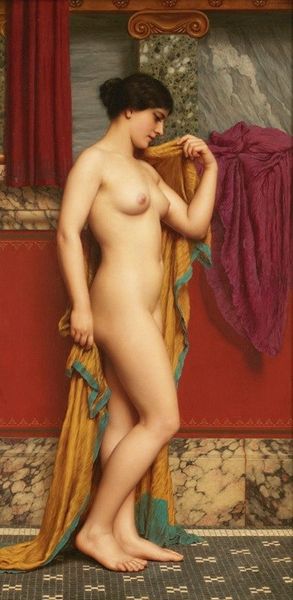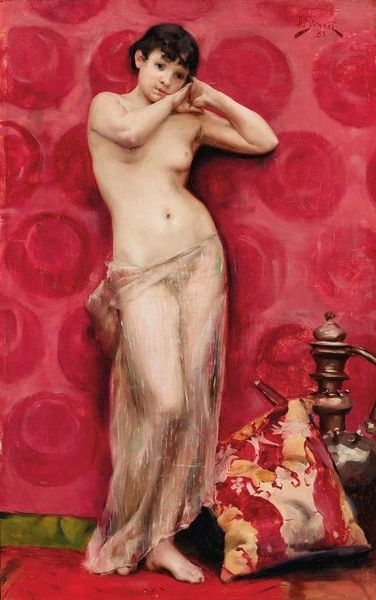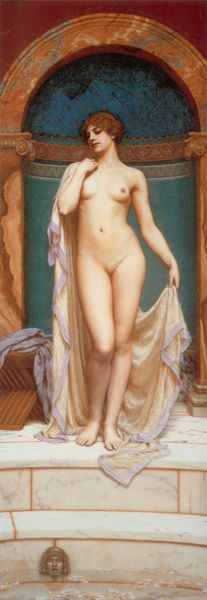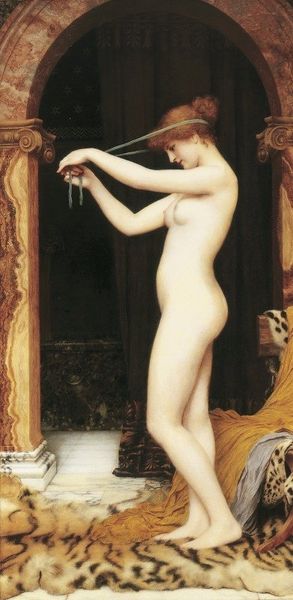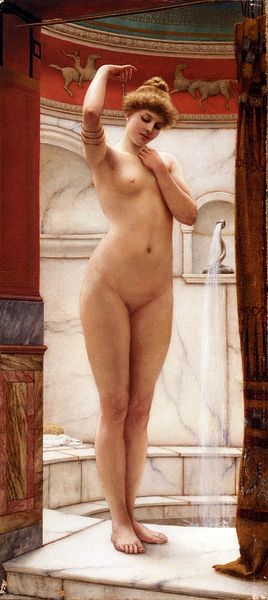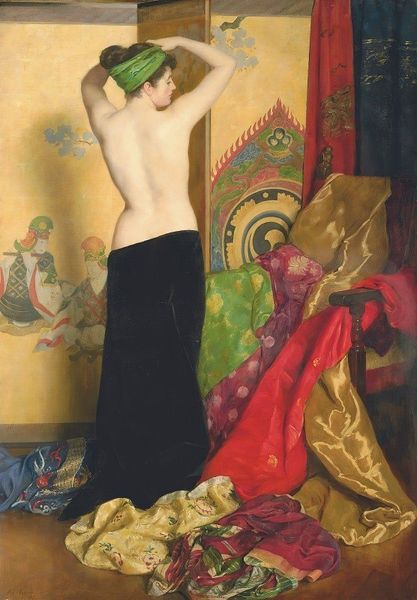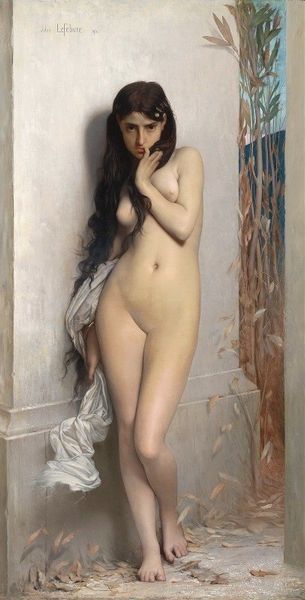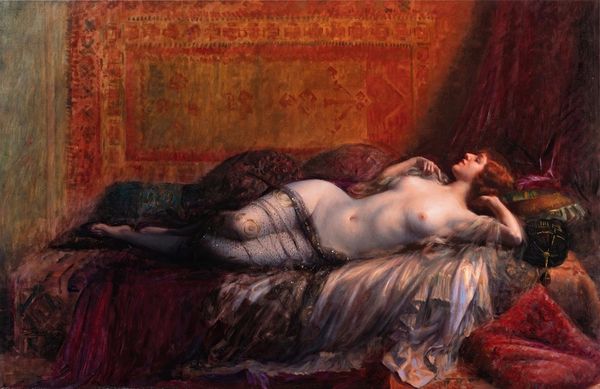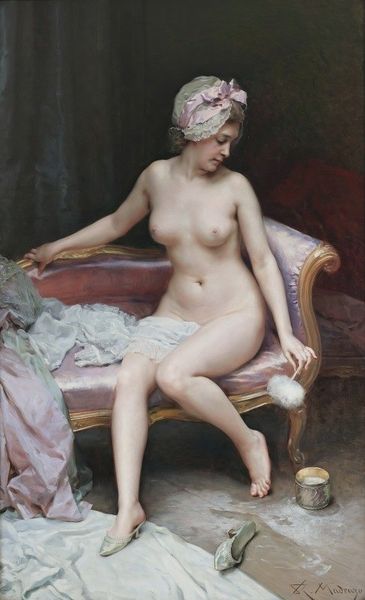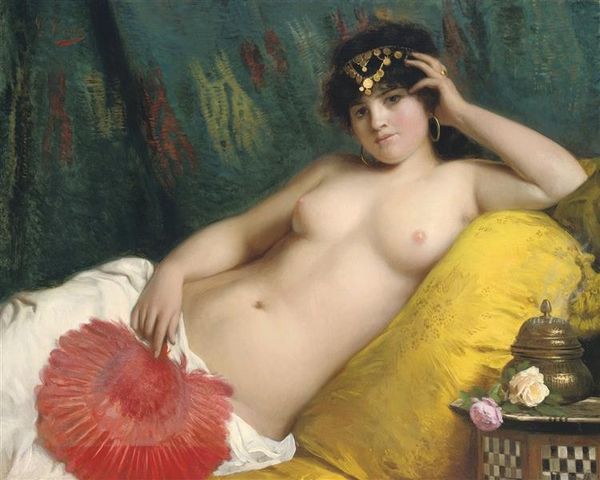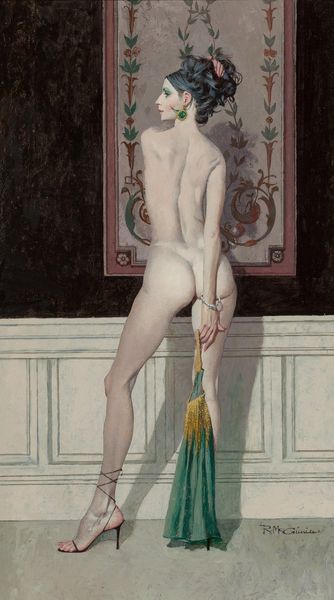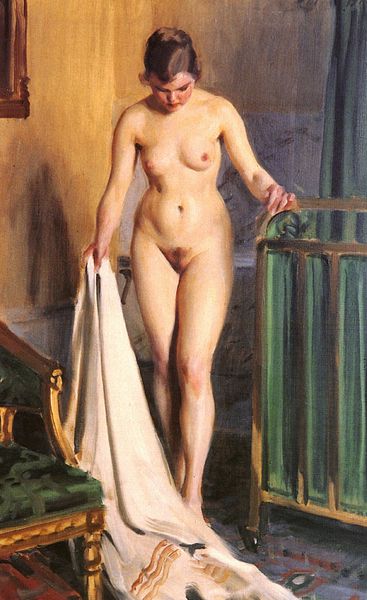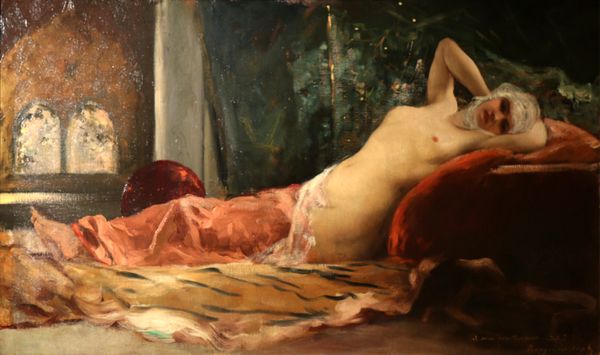
painting, plein-air
#
portrait
#
figurative
#
painting
#
impressionism
#
plein-air
#
figuration
#
intimism
#
orientalism
#
genre-painting
#
nude
Copyright: Public Domain: Artvee
James Tissot painted "La Japonaise Au Bain" during a period of intense cultural exchange between Europe and Japan. It's a moment where the exoticism of the "Orient" fascinated the European imagination, though often filtered through a colonial lens. Here, we see a European woman, not a Japanese one, adorned in what are meant to be Japanese artifacts: a kimono and floral headpiece. She is presented nude, which underscores the eroticization of the "other." The backdrop evokes a Japanese interior but remains an imagined space, more fantasy than reality. How does Tissot use this setting to emphasize his subject's sensuality? This painting operates within complex power dynamics. On one hand, it's a male artist depicting a female body for a presumed male gaze. On the other hand, it reflects a broader European fascination with Japanese aesthetics, even if the understanding was superficial. This piece invites us to consider the cultural appropriation and objectification inherent in such depictions. What does it mean to borrow from another culture, and who benefits from that exchange?
Comments
No comments
Be the first to comment and join the conversation on the ultimate creative platform.
